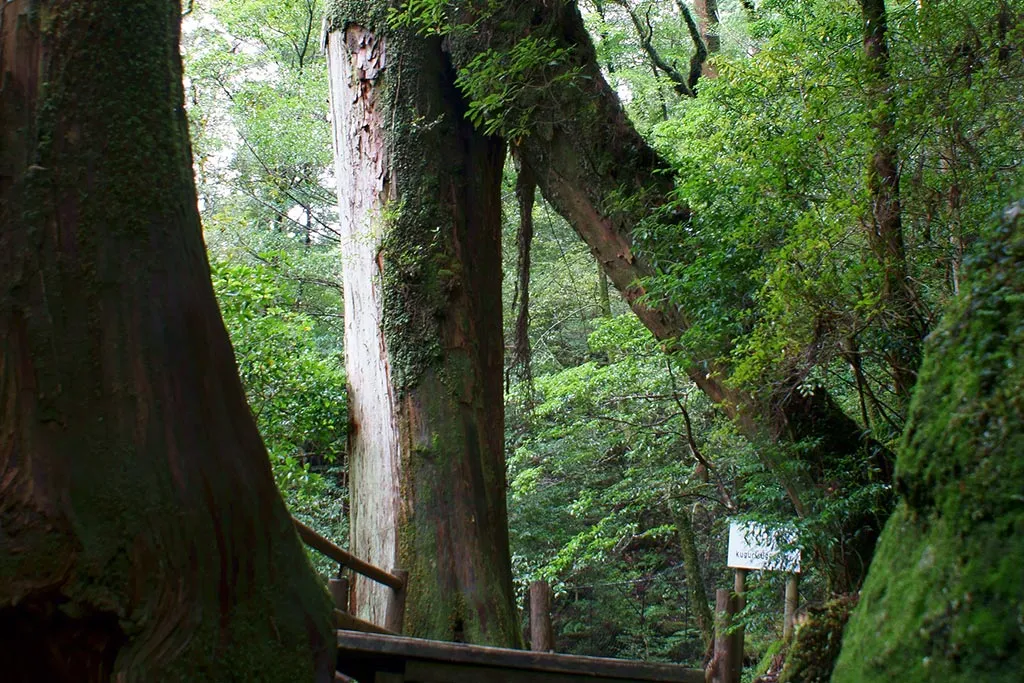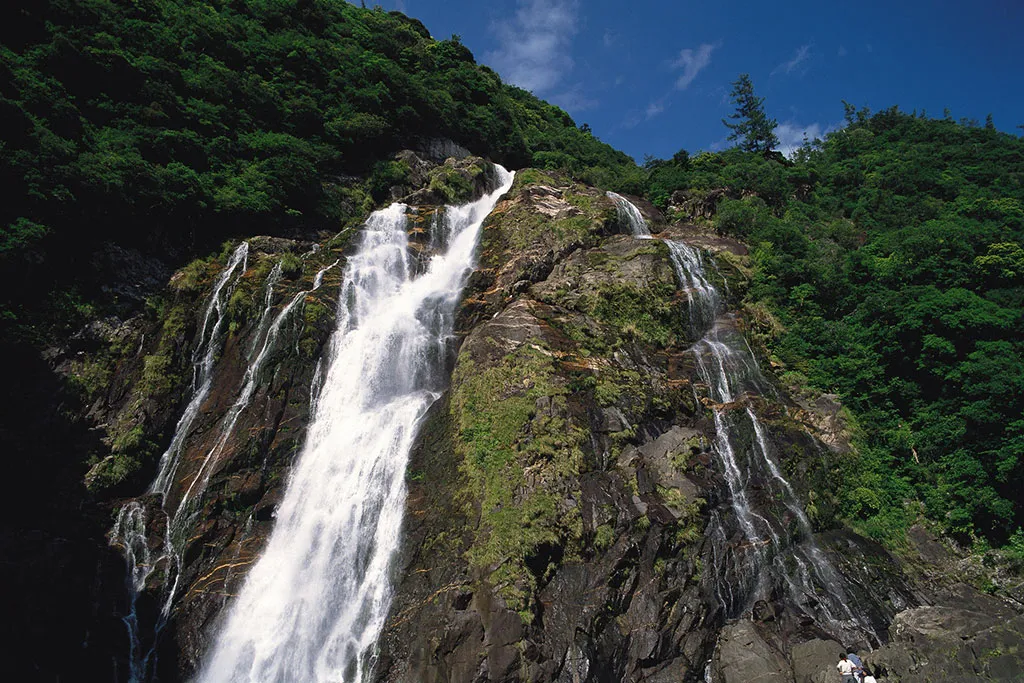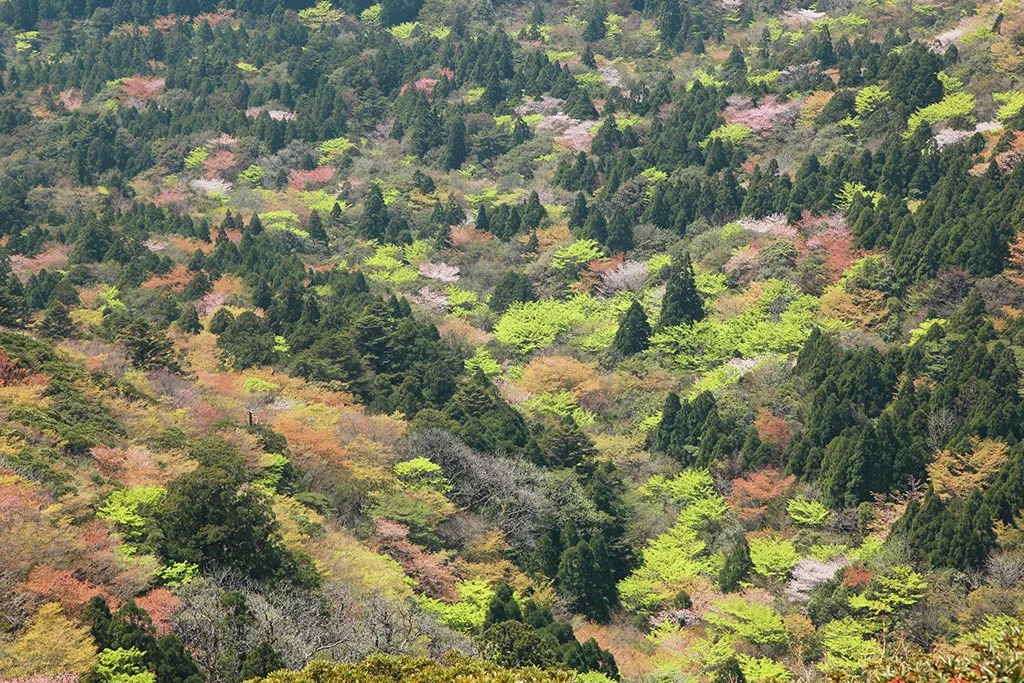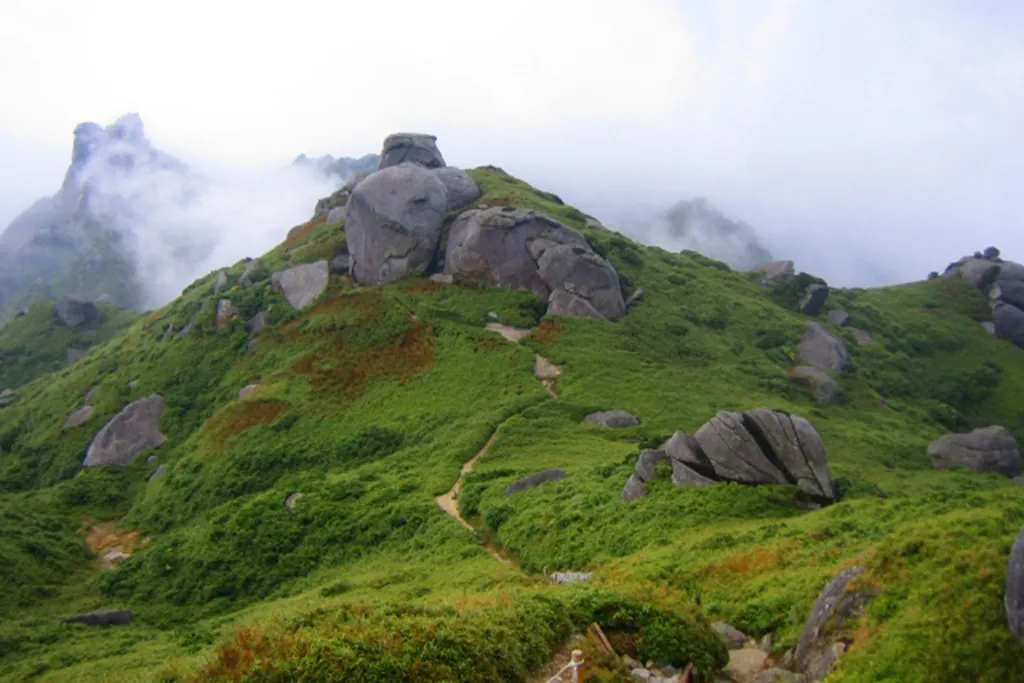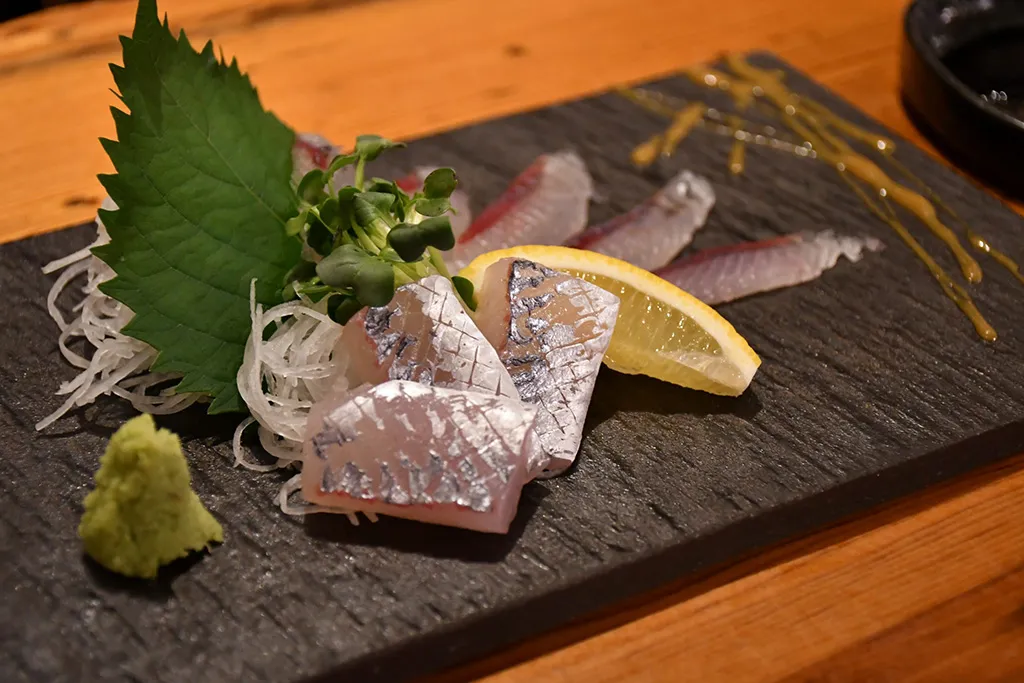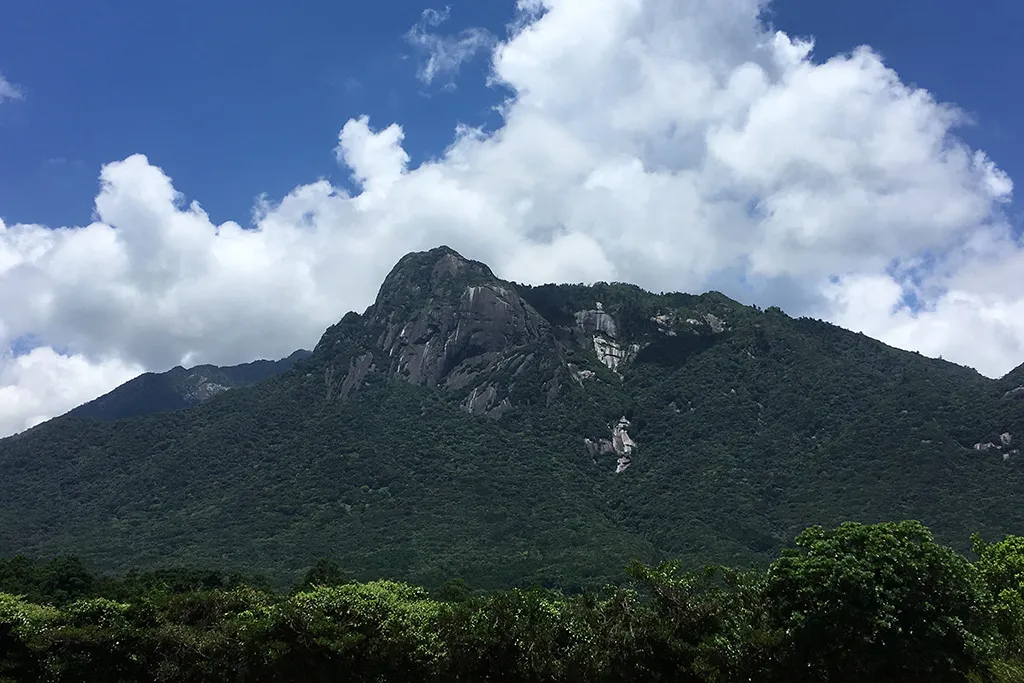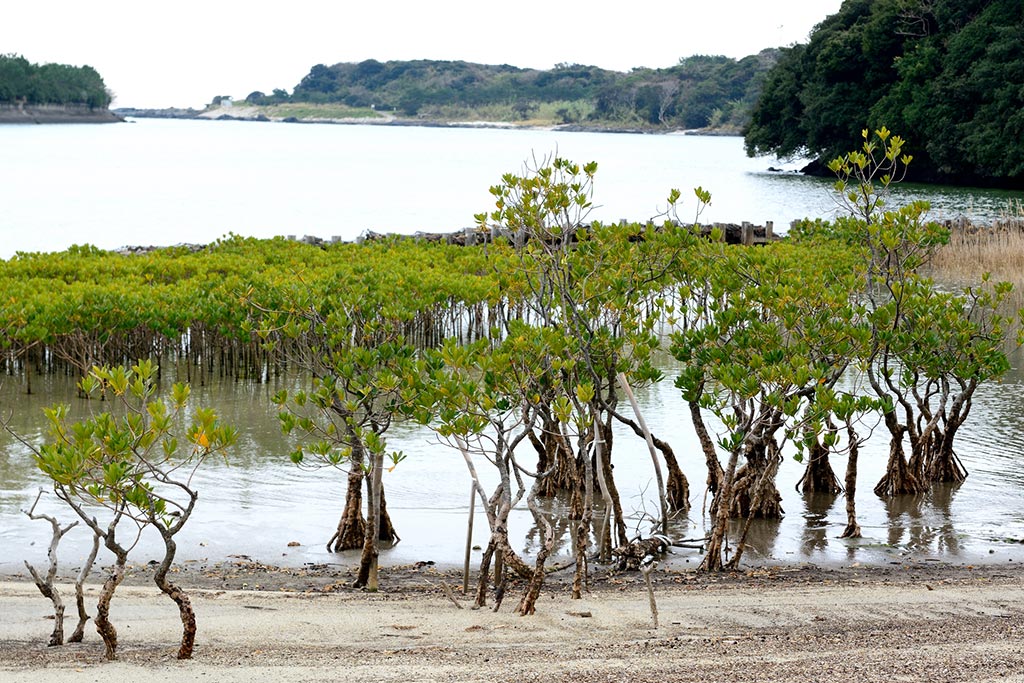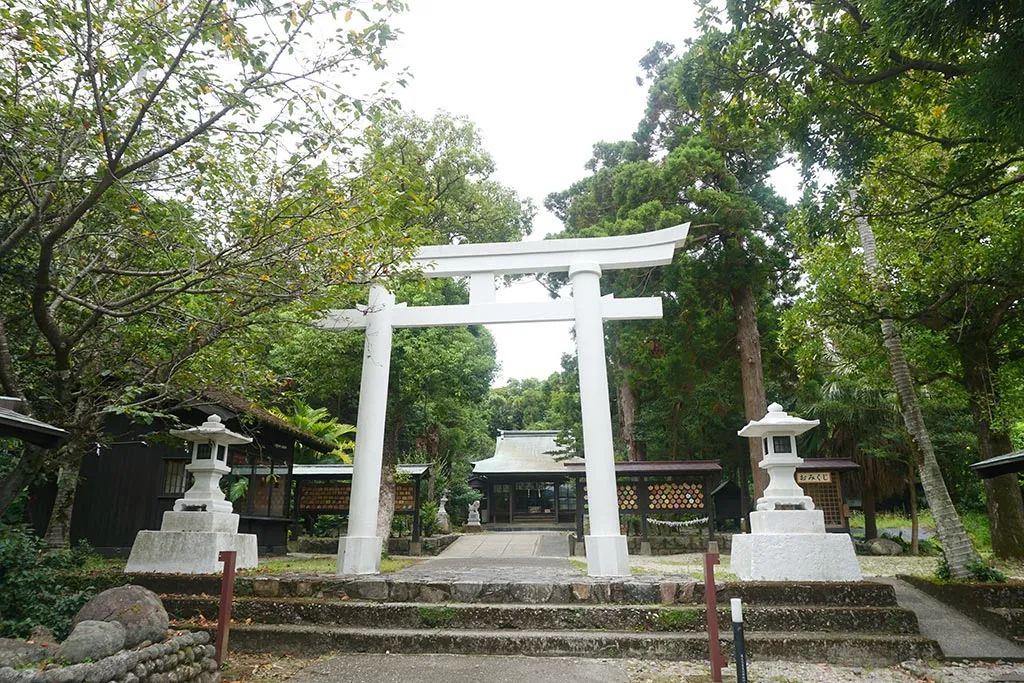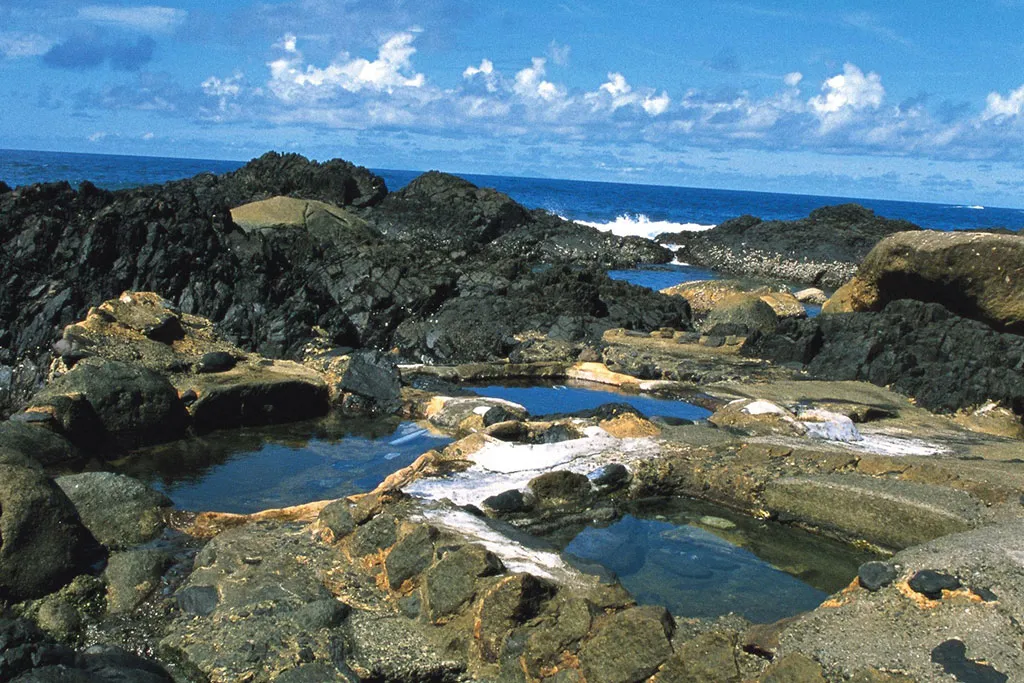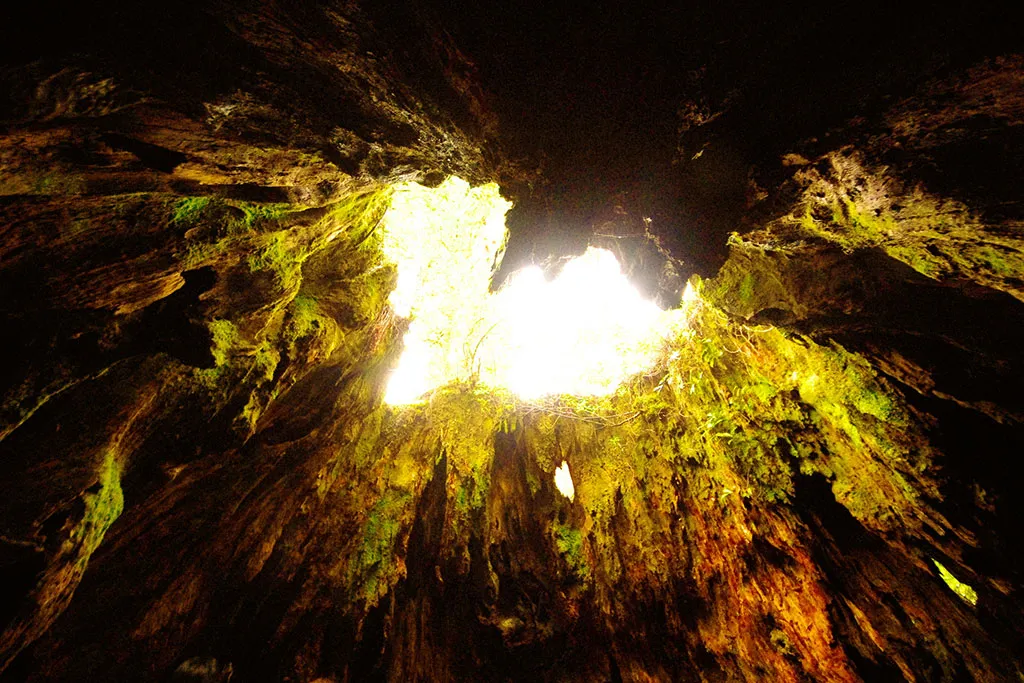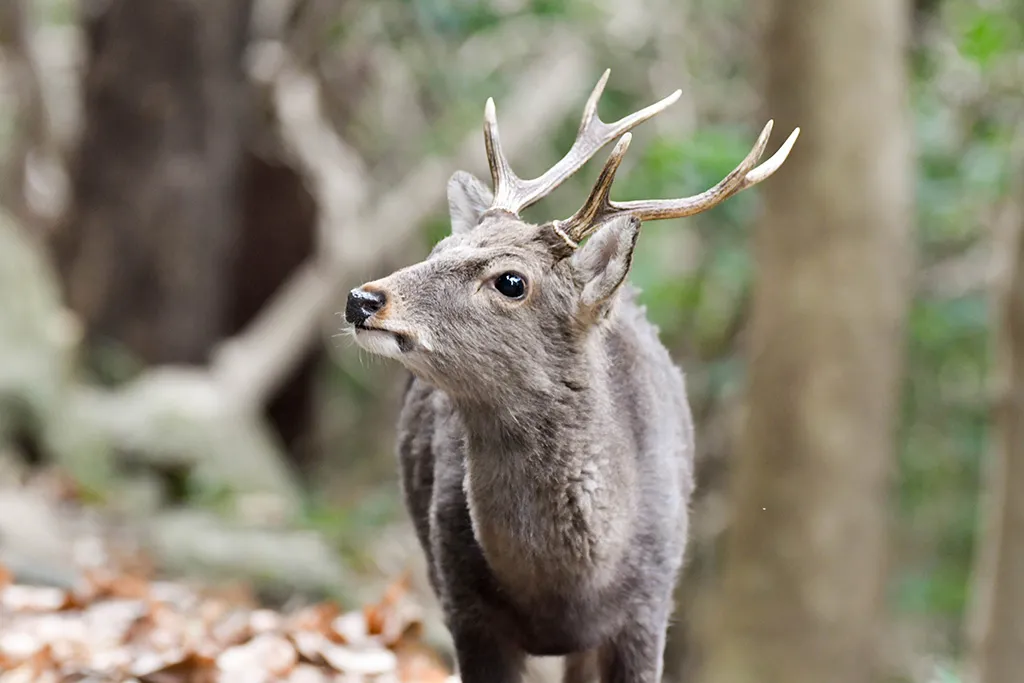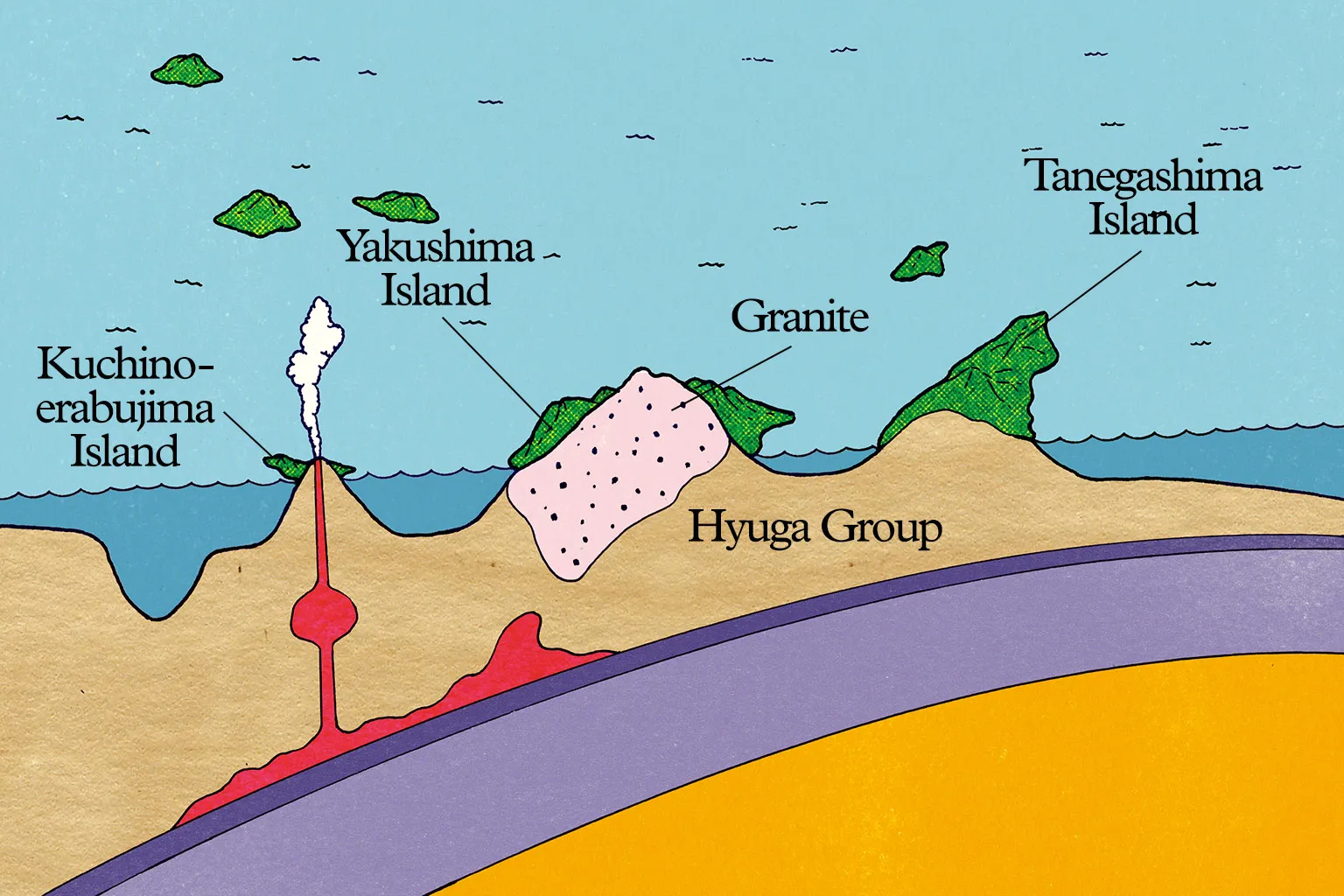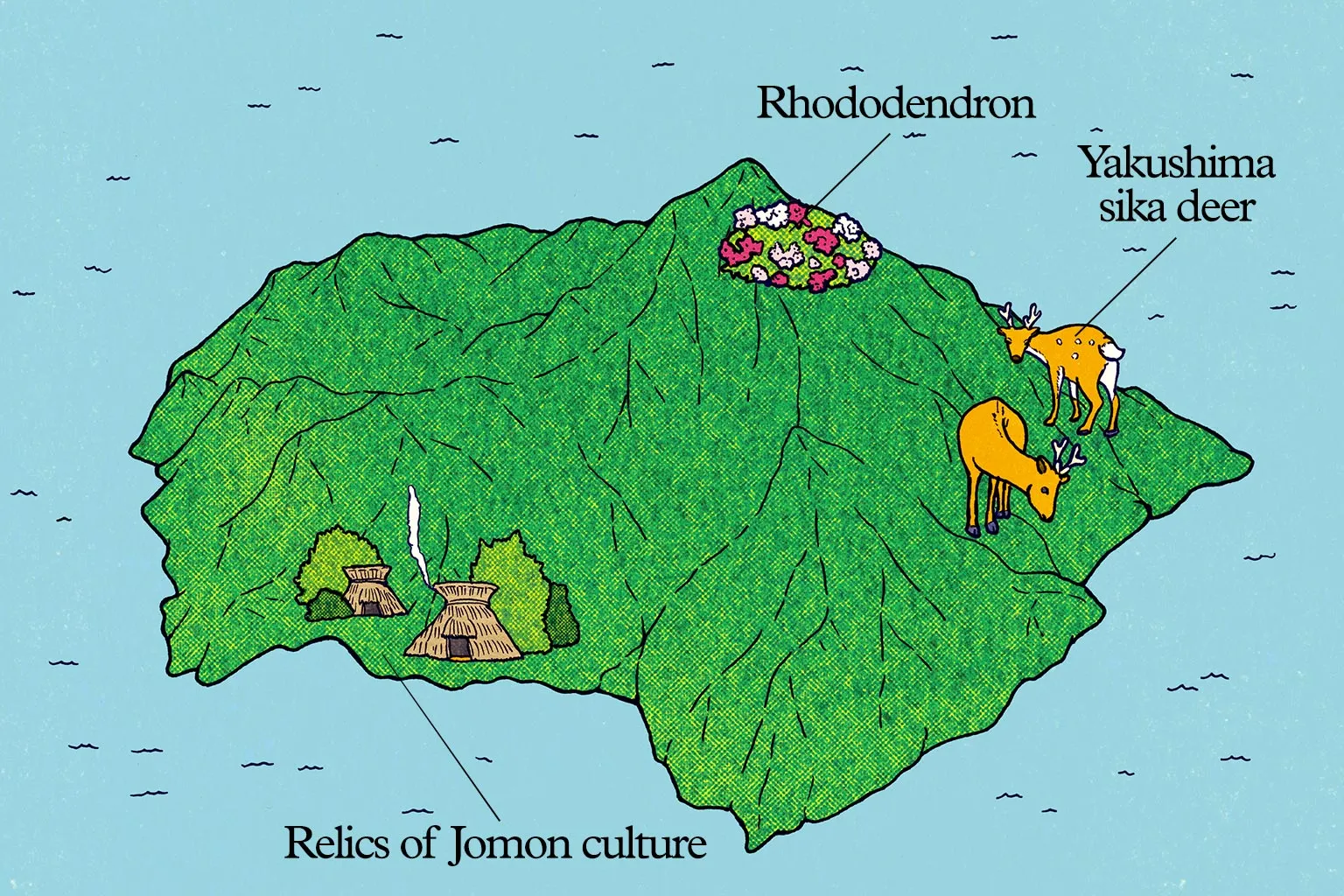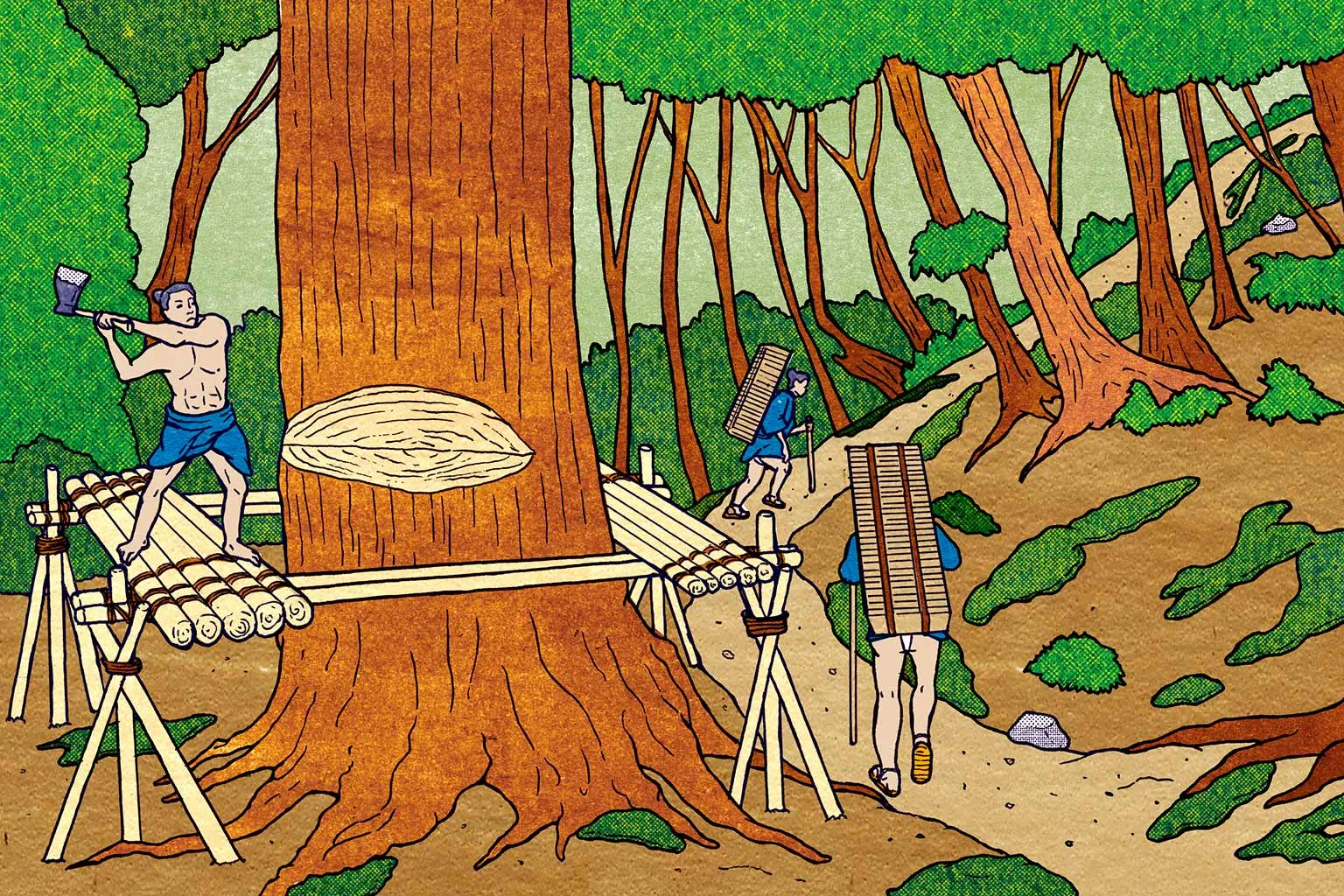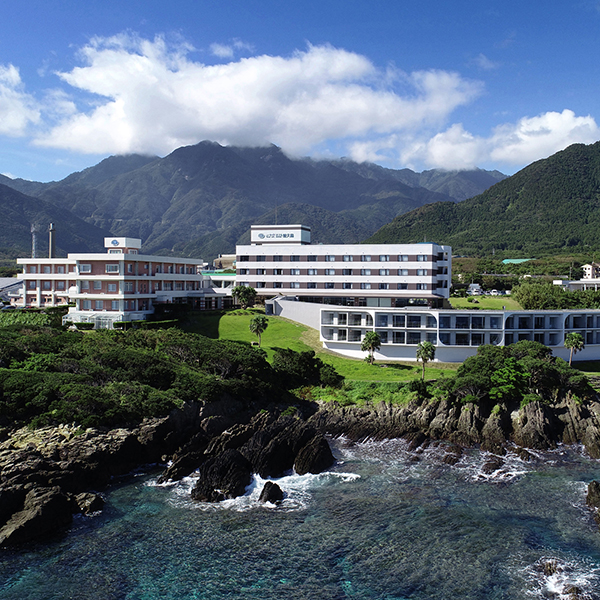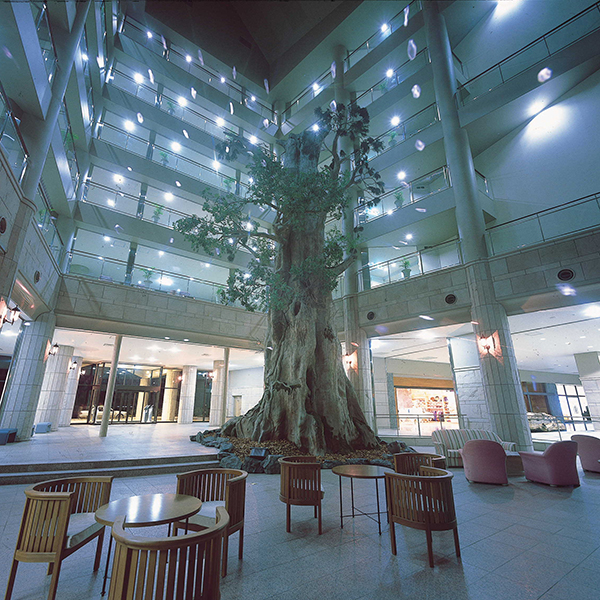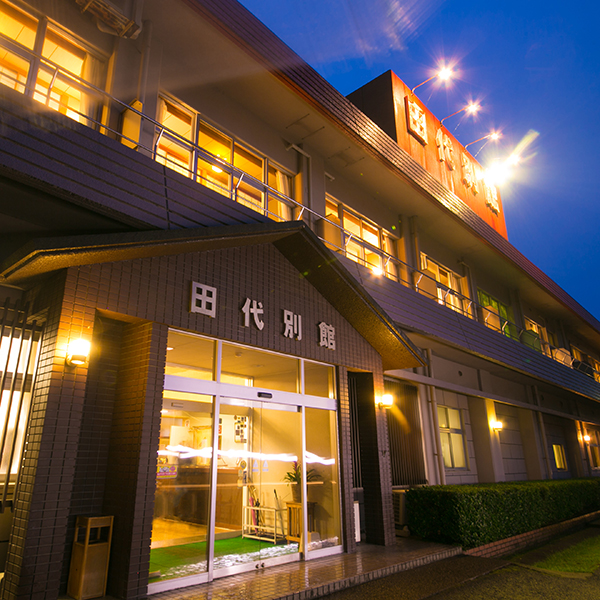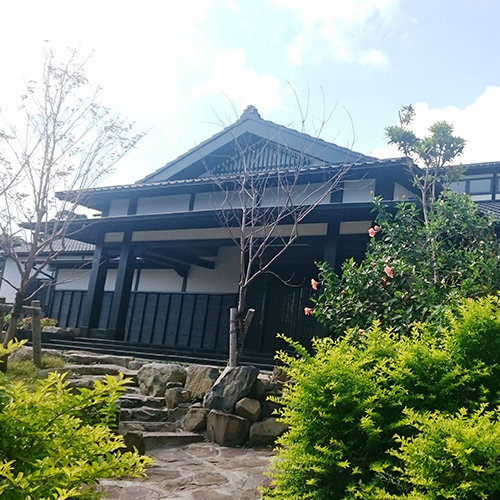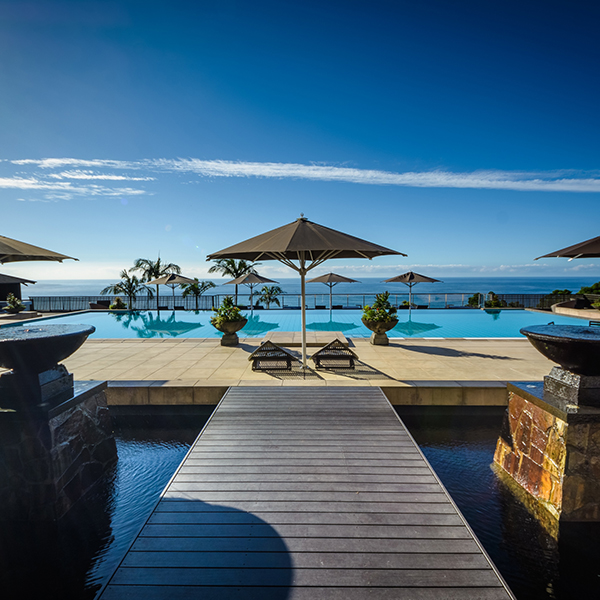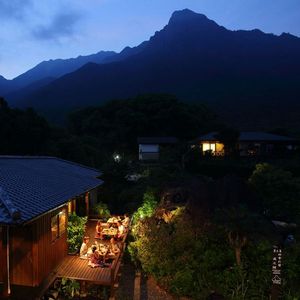Yakushima
Mystical mountains and giant trees nurtured by abundant rainfall
Yakushima floats amid the Pacific and the East China Sea about 135 kilometers to the south of Kagoshima City. Although it is an island, it has several peaks almost 2,000 meters in height. Natural vegetation from throughout Japan is vertically distributed from the coastline to the mountaintops, and the island's virgin native forests are home to giant Japanese cedars that are thousands of years old. In recognition of this rare natural environment and ecosystem, Yakushima was designated as part of Kirishima-Yaku National Park in 1964 (designated as Yakushima National Park in 2012) and registered as Japan's first natural World Heritage site alongside Shirakami-Sanchi in 1993. The island offers numerous and diverse natural wonders, starting with the Jomonsugi Cedar, said to be between 2,000 and 7,200 years old, Mt. Miyanoura (1,936 meters), the highest peak in Kyushu, and the Shiratani-Unsuikyo Ravine with its moss-covered forest.
Through a Day
Yakushima receives a massive amount of rainfall, which is said to be as much as six times that of Tokyo in the mountain areas. This abundant rainfall contributes to the island's scenic beauty and nurtures a rare ecosystem. Here is some of the scenery that you may encounter on this truly miraculous island.
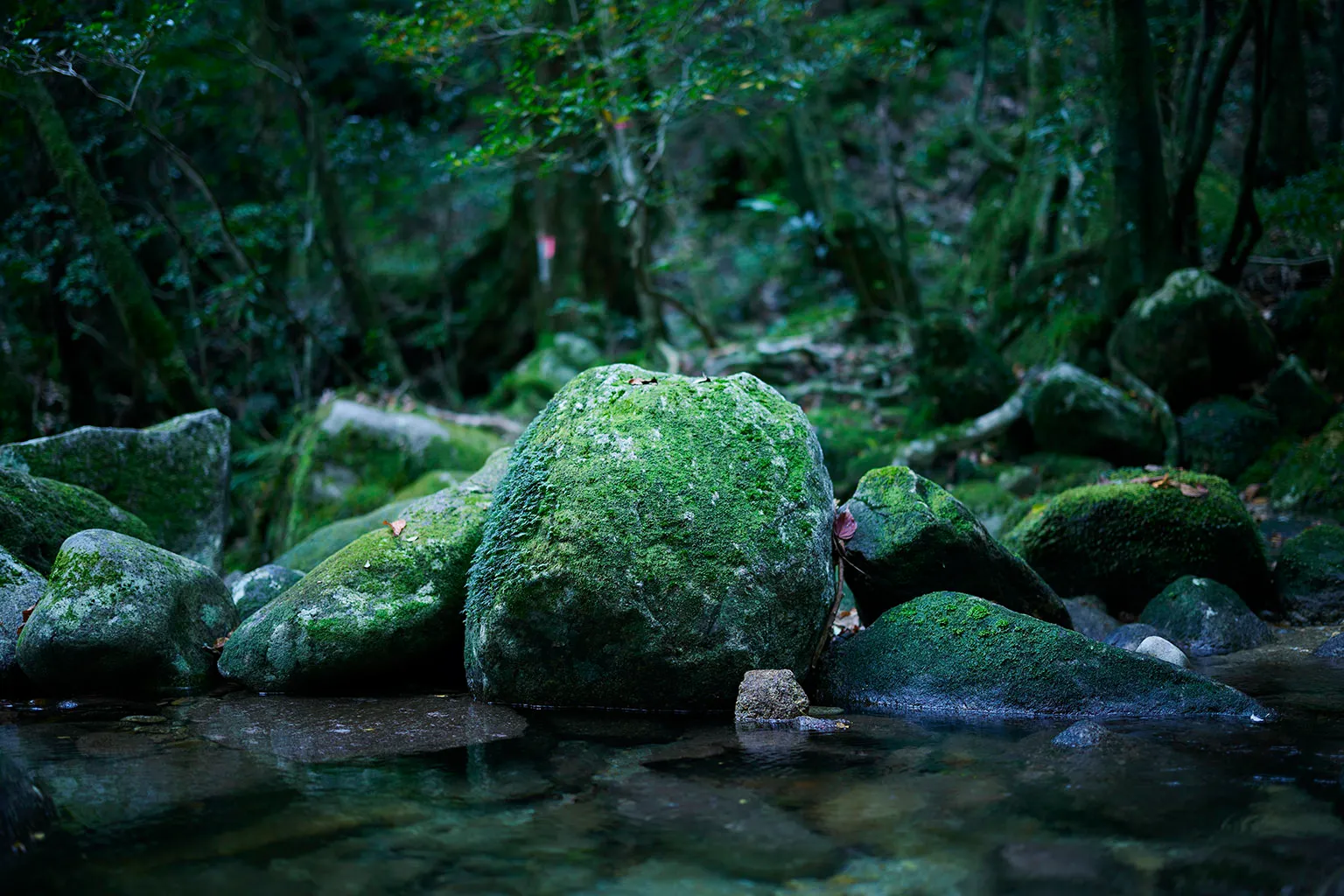
Shiratani-unsuikyo Ravine
Follow the sound of a babbling stream as you walk through this fairytale-like forest bathed in gentle early-morning light. Shiratani-Unsuikyo Ravine was recognized as a natural recreation forest in 1979. As another highlight, a safe boardwalk has been installed so that more people can enjoy this iconic scenery of Yakushima. When you glance down at your feet, moss dripping with water and young tree seedlings create a world like a miniature garden.
Information
- Location
- Miyanoura, Yakushima Town, Kumage District, Kagoshima Prefecture
- Access
- Approx. 25 min by car from downtown Miyanoura to the Shiratani-unsuikyo Mountain Trail entrance; walk from the trail entrance.
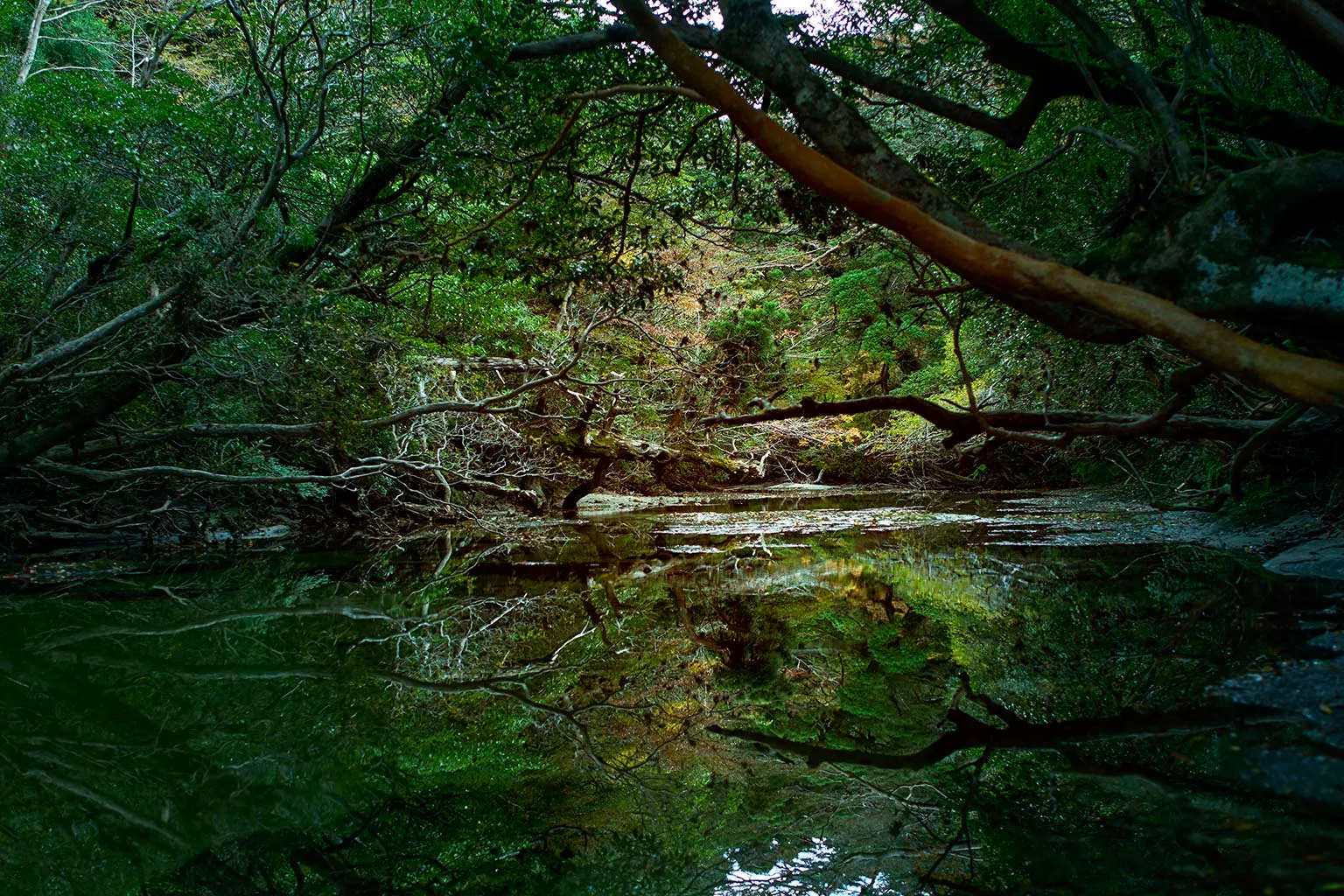
Yodogo River
Another world awaits you as you advance along the mountain trail. The songs of unfamiliar wild birds ring out through the forest, and giant trees that may be thousands of years old benevolently extend their branches toward the heavens. Just when you're ready for a break, you reach a mountain hut. Beyond it flows the Yodogo River with its gentle, emerald-green waters. Sit down on the riverbank and enjoy a cup of coffee. Surely there can be no better place to bathe in the morning sunlight streaming through the leaves of the forest.
Information
- Location
- Yakushima Town, Kumage District, Kagoshima Prefecture
- Access
- 40-min walk from the Yodogo Mountain Trail entrance (full mountaineering gear necessary)
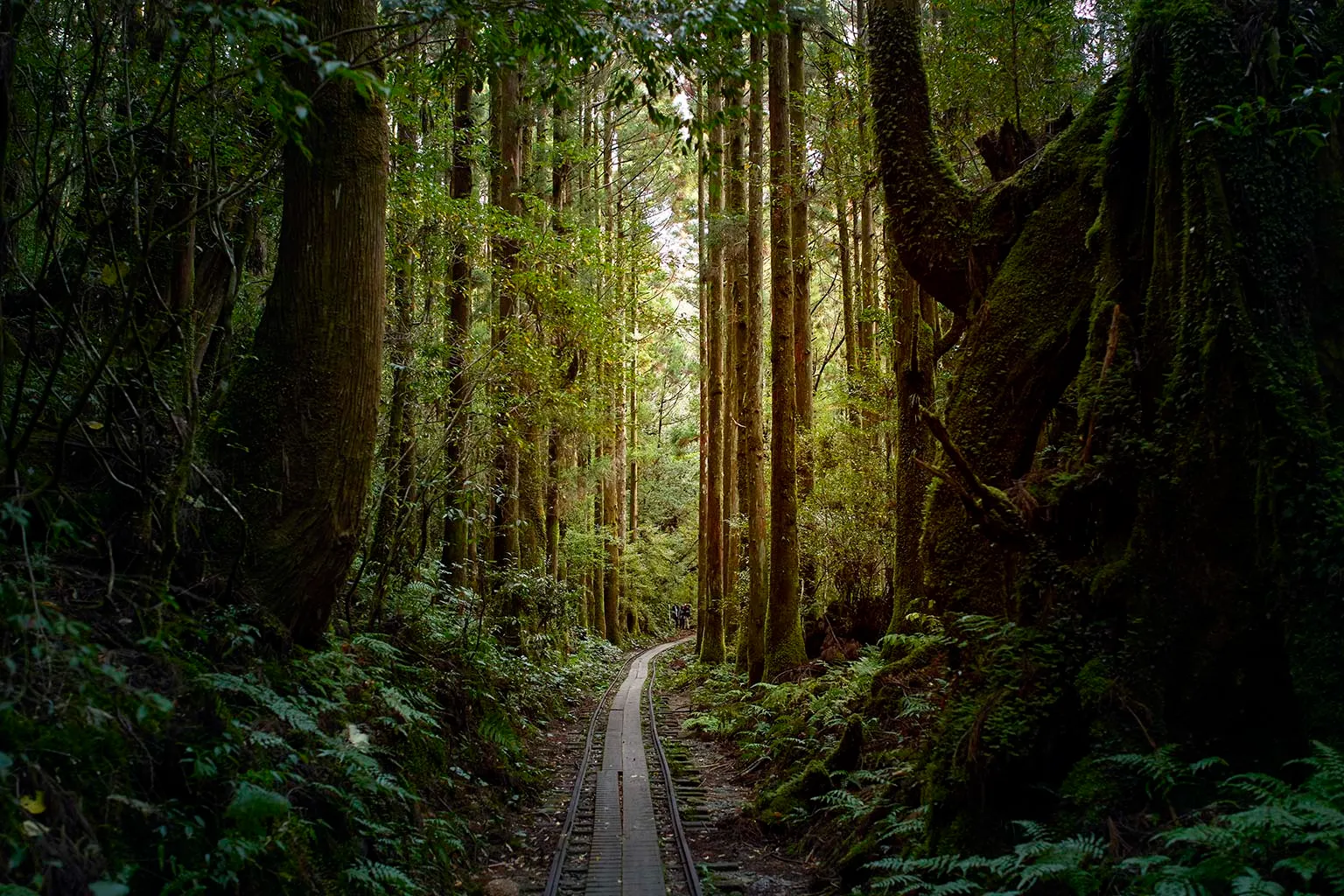
Logging Railroad
Yakushima once had a flourishing timber industry, and the cut timber was carried into town on a logging railroad. This route now guides climbers into and out of the mountains. Hiking along the approximately eight-kilometer tracks offers a sense of adventure, with hand-dug tunnels and bridges over rivers. You can also see many Yakushima cedar trees, including the famous Niosugi Cedar.
Information
- Location
- Yakushima Town, Kumage District, Kagoshima Prefecture
- Access
- Walk from the Arakawa Mountain Trail entrance; the logging railroad is approx. 6 hours round trip.
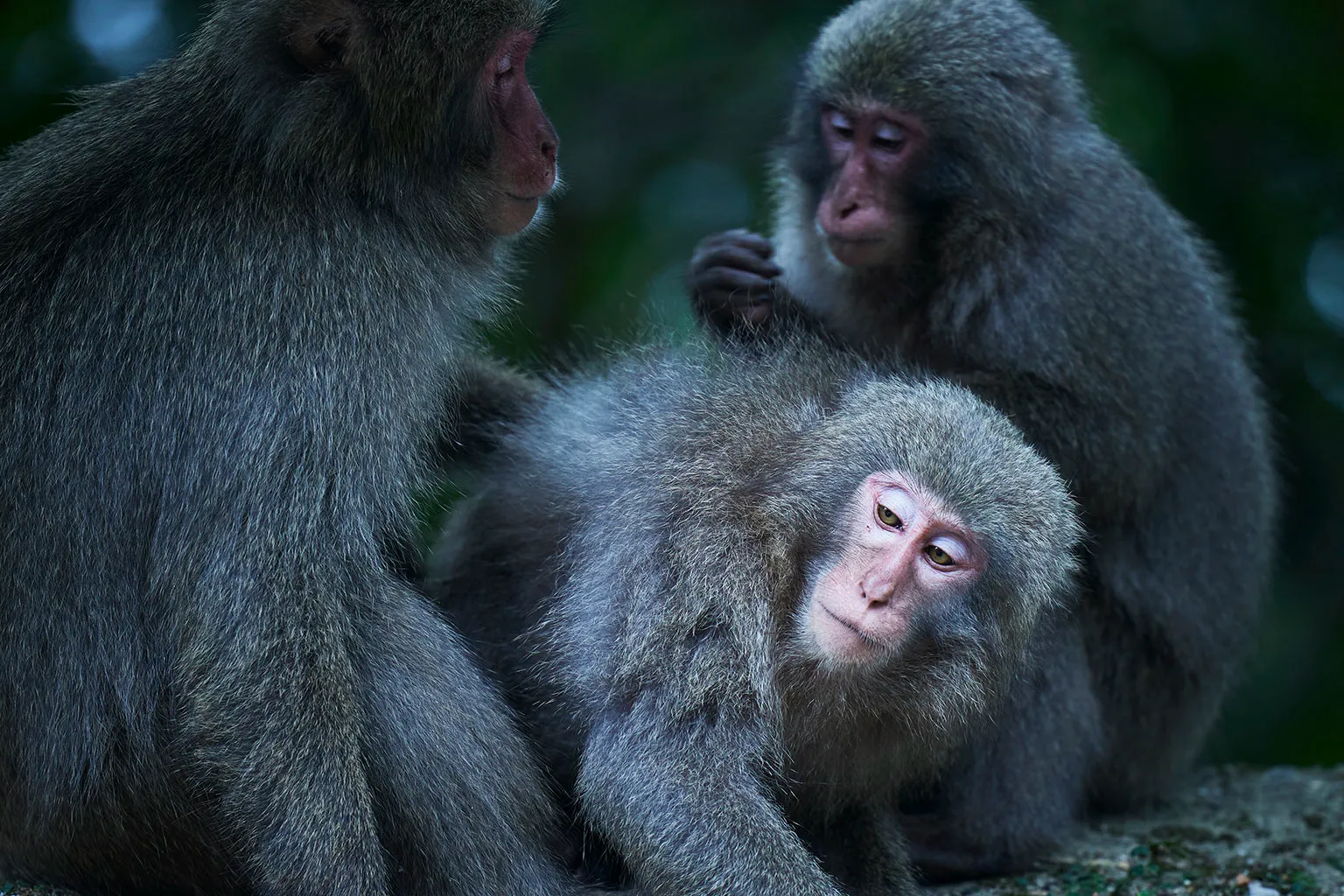
Seibu Rindo Forest Path & Yakushima Macaques
Even though 90% of Yakushima is covered by forests, the Seibu Rindo Forest Path travels through especially pristine evergreen broadleaf forest, among the finest in Japan. In this area with sparse vehicle traffic, you may encounter Yakushima macaques, an endemic species. Watching them amicably grooming each other and basking in the sun will warm your heart. However, please keep in mind that these are wild animals, and do not feed them under any circumstances. Simply watching them quietly through the windows of your car is best.
Information
- Location
- Yakushima Town, Kumage District, Kagoshima Prefecture
- Access
- Approx. 1 hr by car from downtown Anbo
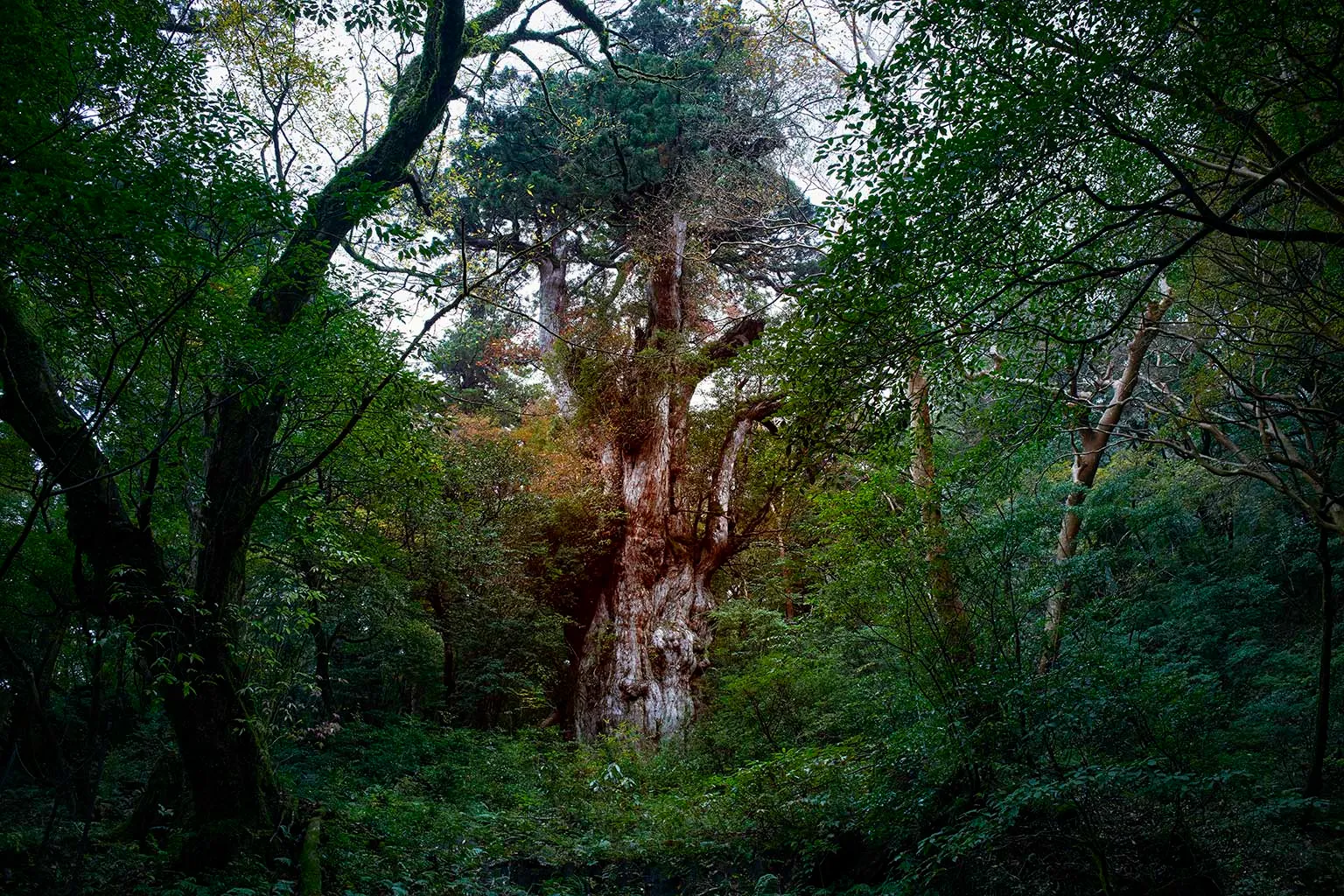
Jomonsugi Cedar
After hiking for about five hours along a trail where you are overwhelmed by the sight of meandering tree roots and dynamic-looking rocks, you will arrive at the symbol of Yakushima, the Jomonsugi Cedar. Said to be as many as 2,000 and 7,200 years old, it is an ancient presence on the island. Despite its magnificent form that survived the elements on Yakushima, there is also a story that it escaped felling as timber thanks to its irregular shape. Over ten species of plants grow on the tree, forming an ecosystem indicative of Yakushima's rainy environment.
Information
- Location
- Yakushima Town, Kumage District, Kagoshima Prefecture
- Access
- 10-11 hours round trip on foot from the Arakawa Mountain Trail entrance (full mountaineering gear necessary)
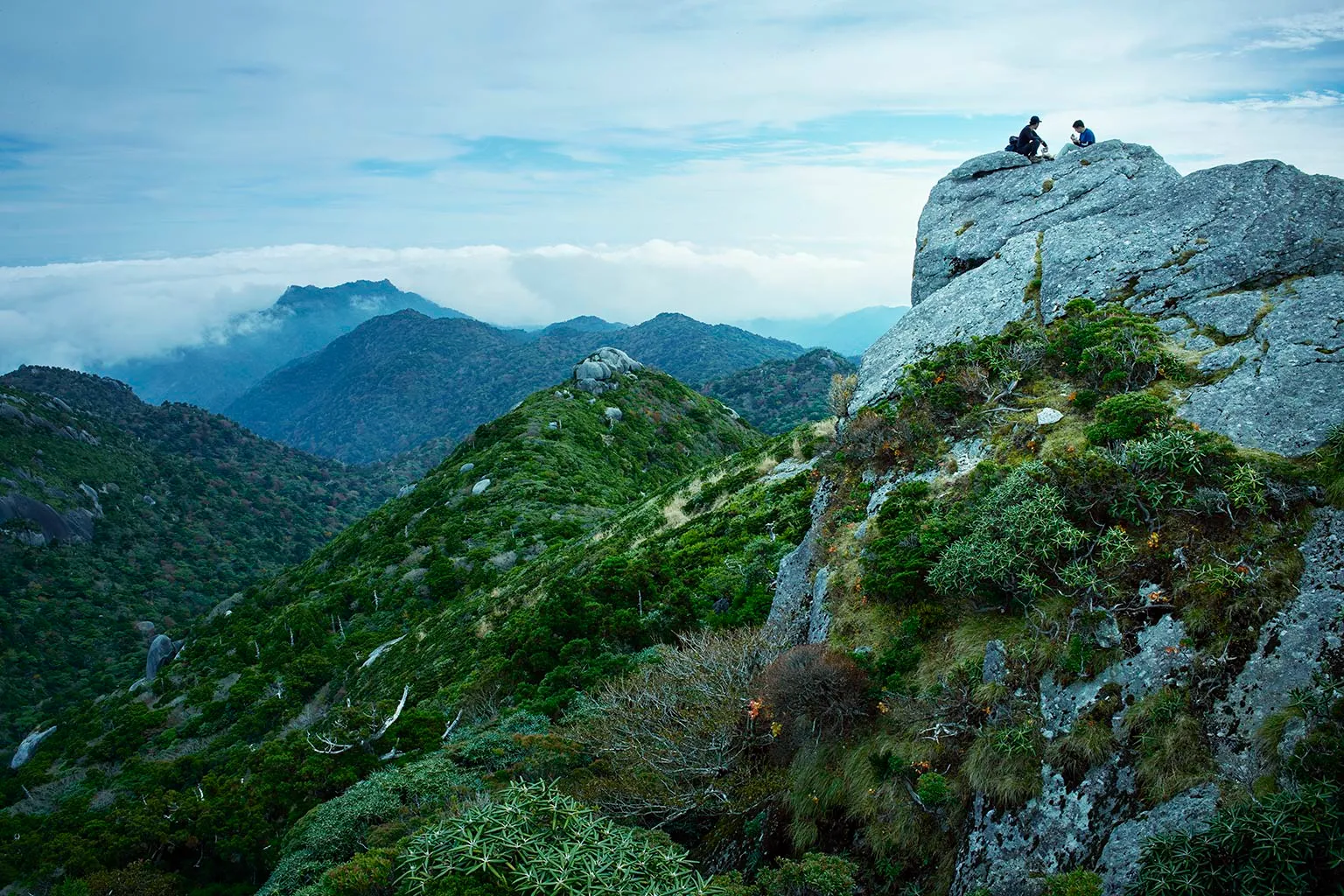
Mt. Kuromi
A sea of clouds spreads out below, and beyond it looms Mt. Miyanoura, the highest peak on Yakushima. This panoramic view from the summit of the massive granite Mount Kuromi (1,831 meters) almost makes the exhaustion of the climb, about five kilometers each way, dissipate. Since the weather tends to change in the afternoon, shrouding the mountain in fog, it is best to reach the summit by noon. Have lunch at the summit to enjoy a scenic picnic not easily experienced elsewhere. Seeing ridge climbers in the distance, you mentally send them silent words of encouragement.
Information
- Location
- Hirauchi, Yakushima Town, Kumage District, Kagoshima Prefecture
- Access
- 6-7 hours round trip on foot from the Yodogo Mountain Trail entrance (full mountaineering gear necessary)
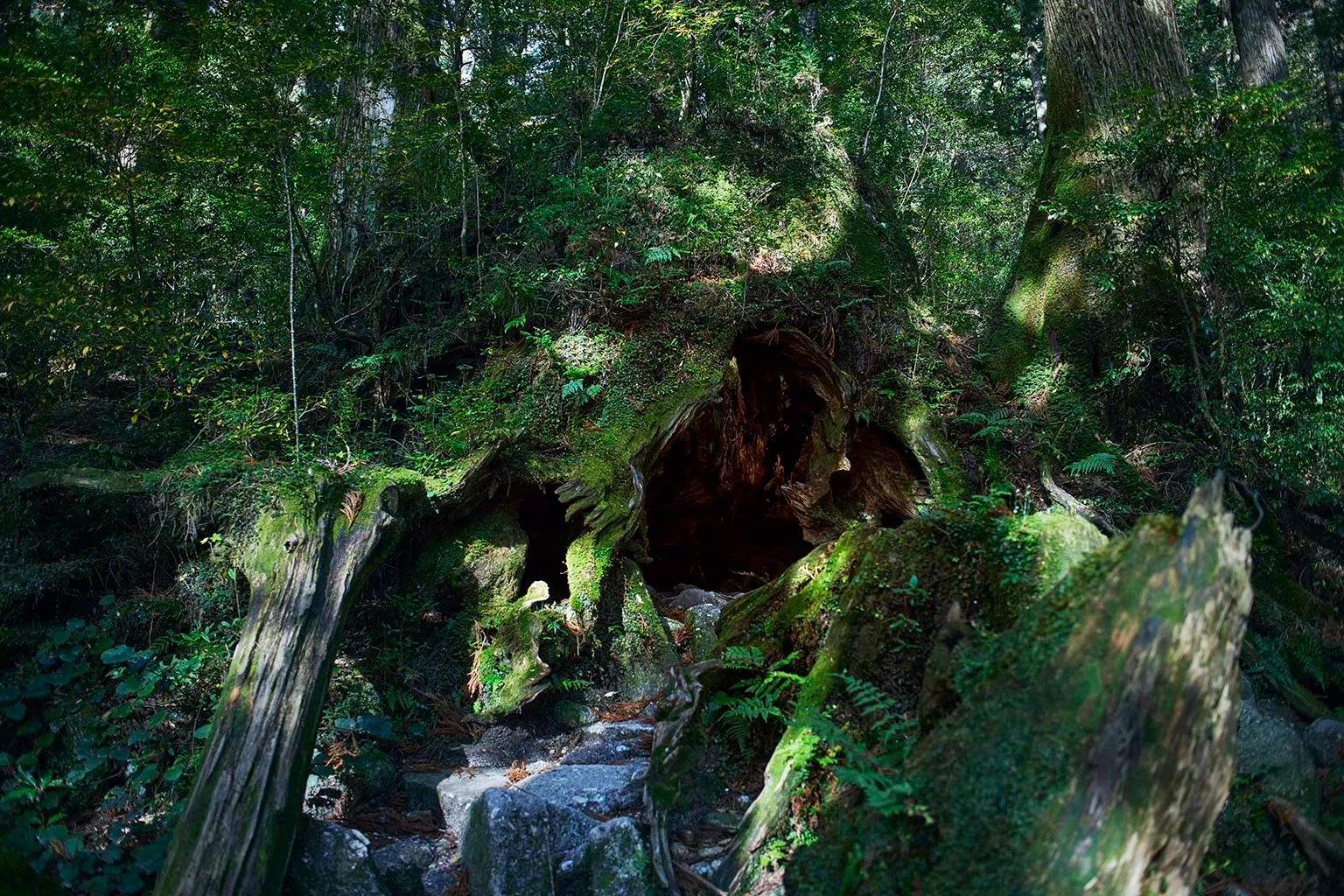
Wilson's Stump
This large stump sits imposingly in a stage-like space. It is said to have been felled about 400 years ago for the construction of Hokoji Temple in Kyoto by order of the warlord Toyotomi Hideyoshi and is now surrounded by enormous cedar trees that grew afterward, reminding us of the passage of time. The stump is named after the British botanist E. H. Wilson, who studied this area in the 1910s. A spring flows inside the hollow of the trunk, and the top appears to form a heart-shaped hole when you look up at the sky.
Information
- Location
- Yakushima Town, Kumage District, Kagoshima Prefecture 891-4205
- Access
- 6-7 hours round trip on foot from the Arakawa Mountain Trail entrance (full mountaineering gear necessary)
*Vehicle access to the Arakawa Mountain Trail entrance is restricted from March 1 to November 30. Please use the Arakawa Mountain Bus or a taxi or chartered bus from the Yakusugi Museum.
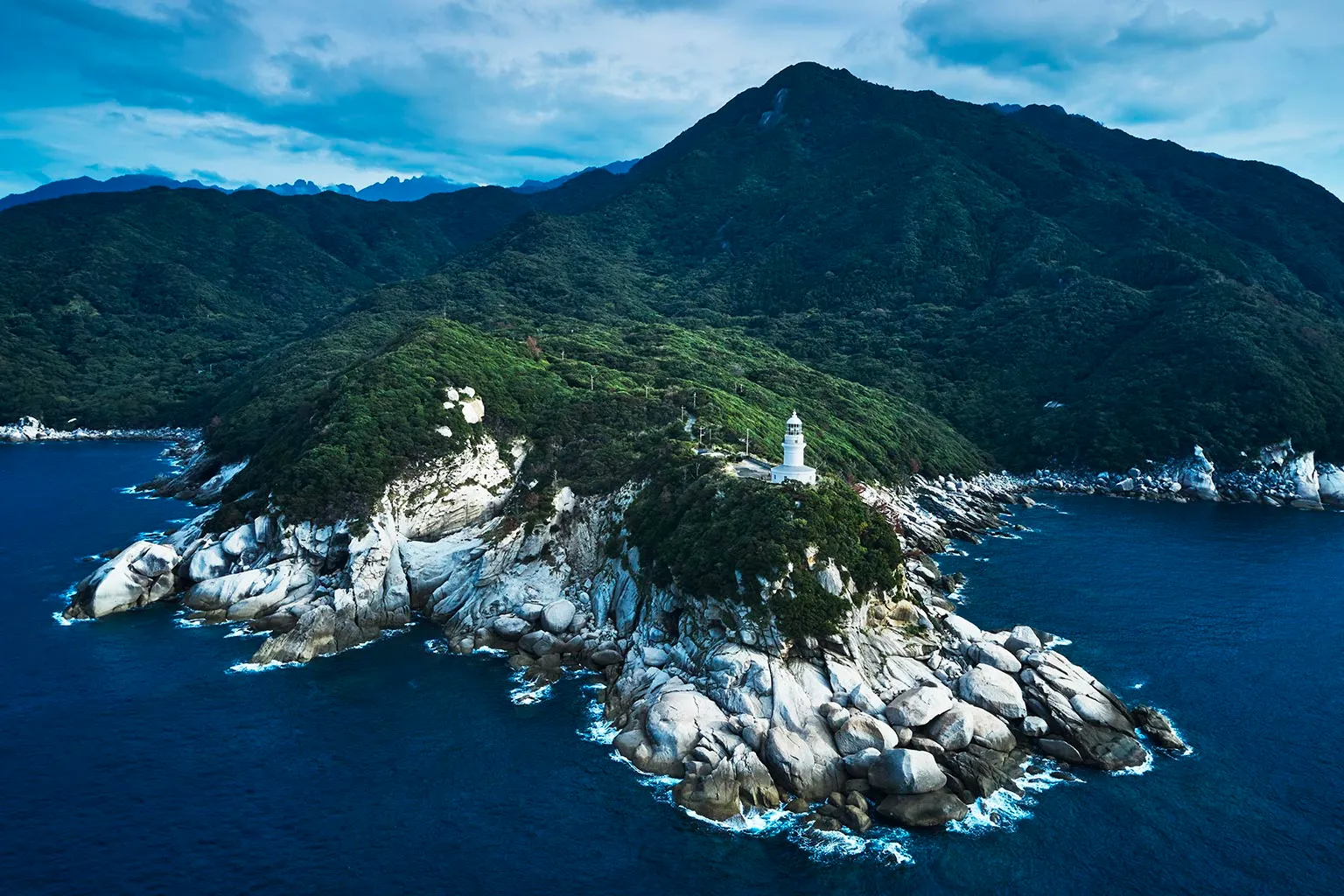
Yakushima Lighthouse
This white-walled lighthouse at the tip of a cape stands out against the ultramarine blue of the sea. It has watched over passing ships for over a century since its light was first lit in 1897. If you look back, you can see primeval forests, as well as the granite that forms the island exposed on the shoreline. Yakushima is said to have been born from seafloor lava that solidified into granite and was later lifted up to the surface, meaning that the island was originally located at the bottom of the sea. As you watch ships coming and going, your thoughts turn to the island's origins.
Information
- Location
- Nagata, Yakushima Town, Kumage District, Kagoshima Prefecture
- Access
- Approx. 10 min by car from the village of Nagata; 60 min by car from downtown Miyanoura
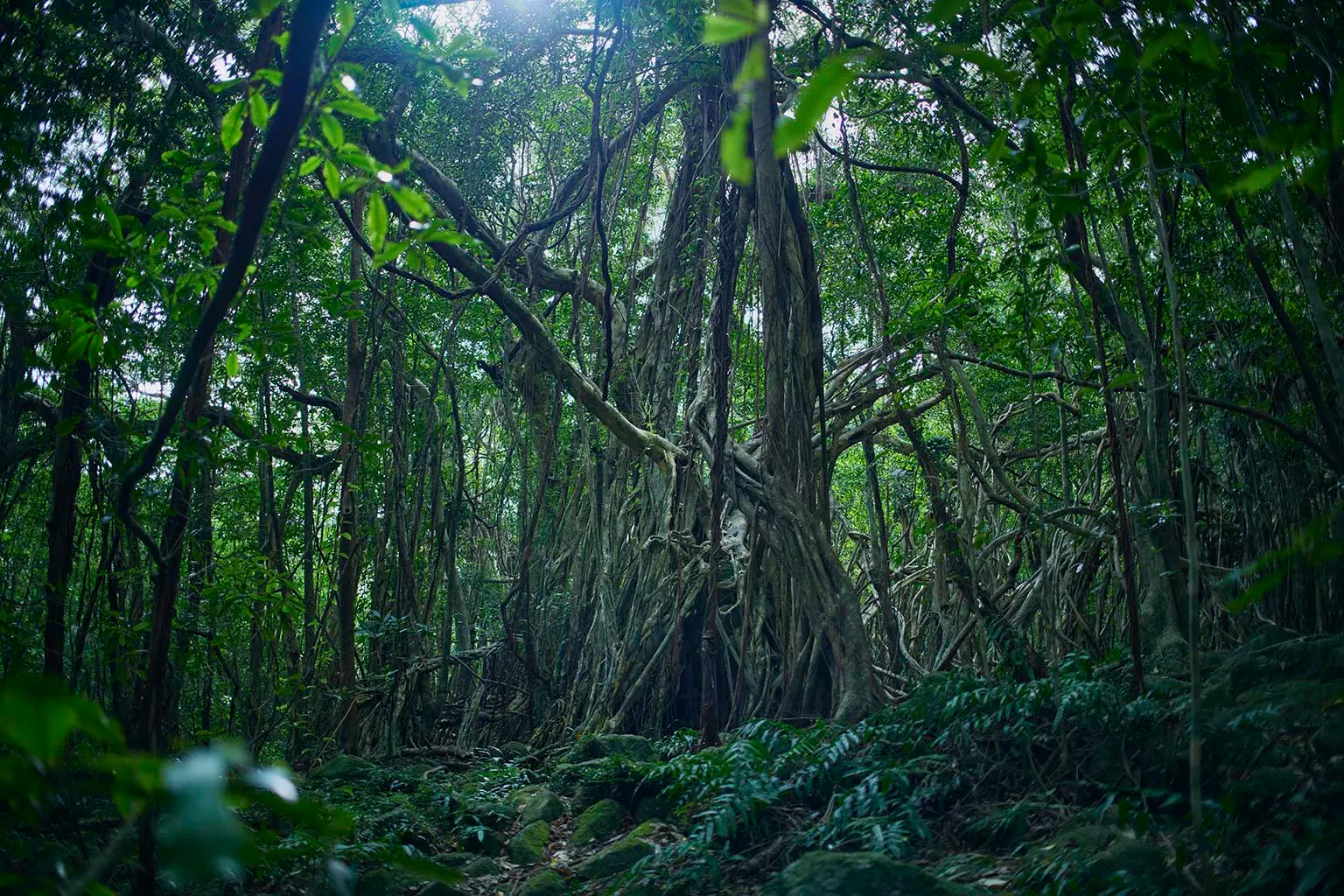
Sarukawa Banyan Trees
As you push your way through the jungle path, you enter a forest of banyan trees that look like they could spring into motion at any moment. The trailing roots are so tangled that it is impossible to tell how many trees there are. Known as "aerial roots," these roots that grow above the ground are an adaptation to lift up the trunk of the tree and receive more sunlight, even in dark forests. The afternoon sunlight streams into this mysterious space that reawakens you to the power of life.
Information
- Location
- 2725 Anbo, Yakushima Town, Kumage District, Kagoshima Prefecture
- Access
- Approx. 20 min by car from Anbo; 5-min walk from the parking lot to the trail
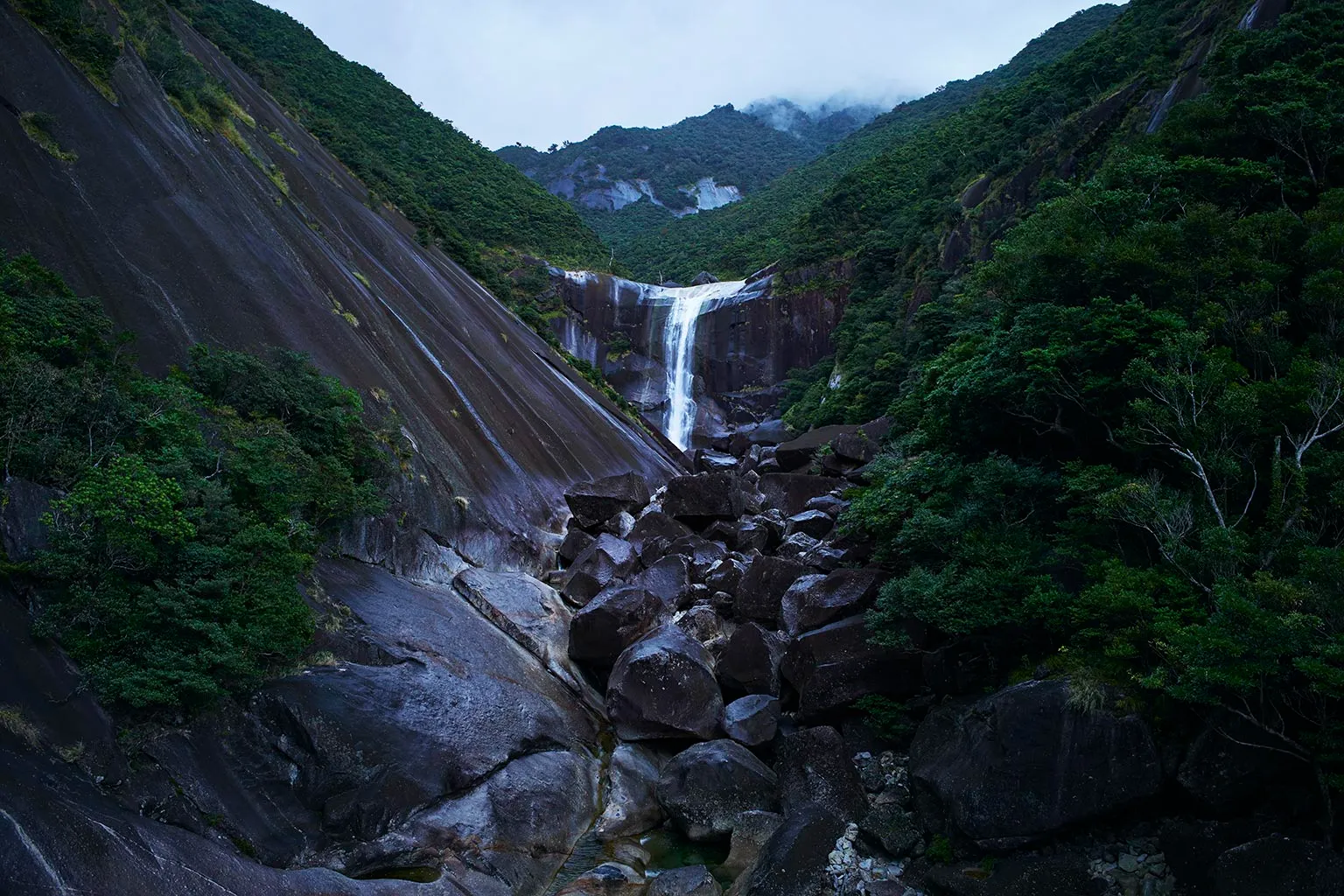
Senpiro-no-taki Waterfall
This waterfall flows down a block of granite 400 meters in depth. Its name means "the length of 1,000 people holding hands," supposedly referring to the size of the rock face. The waterfall has a drop of about 60 meters and is no less impressive when viewed from the observation deck. Around dusk, its thunderous roar reverberates across the V-shaped gorge, filling you with awe toward nature and reminding you of the power of the island's waters.
Information
- Location
- Mugio, Yakushima Town, Kumage District, Kagoshima Prefecture
- Access
- Approx. 25 min by car from Anbo
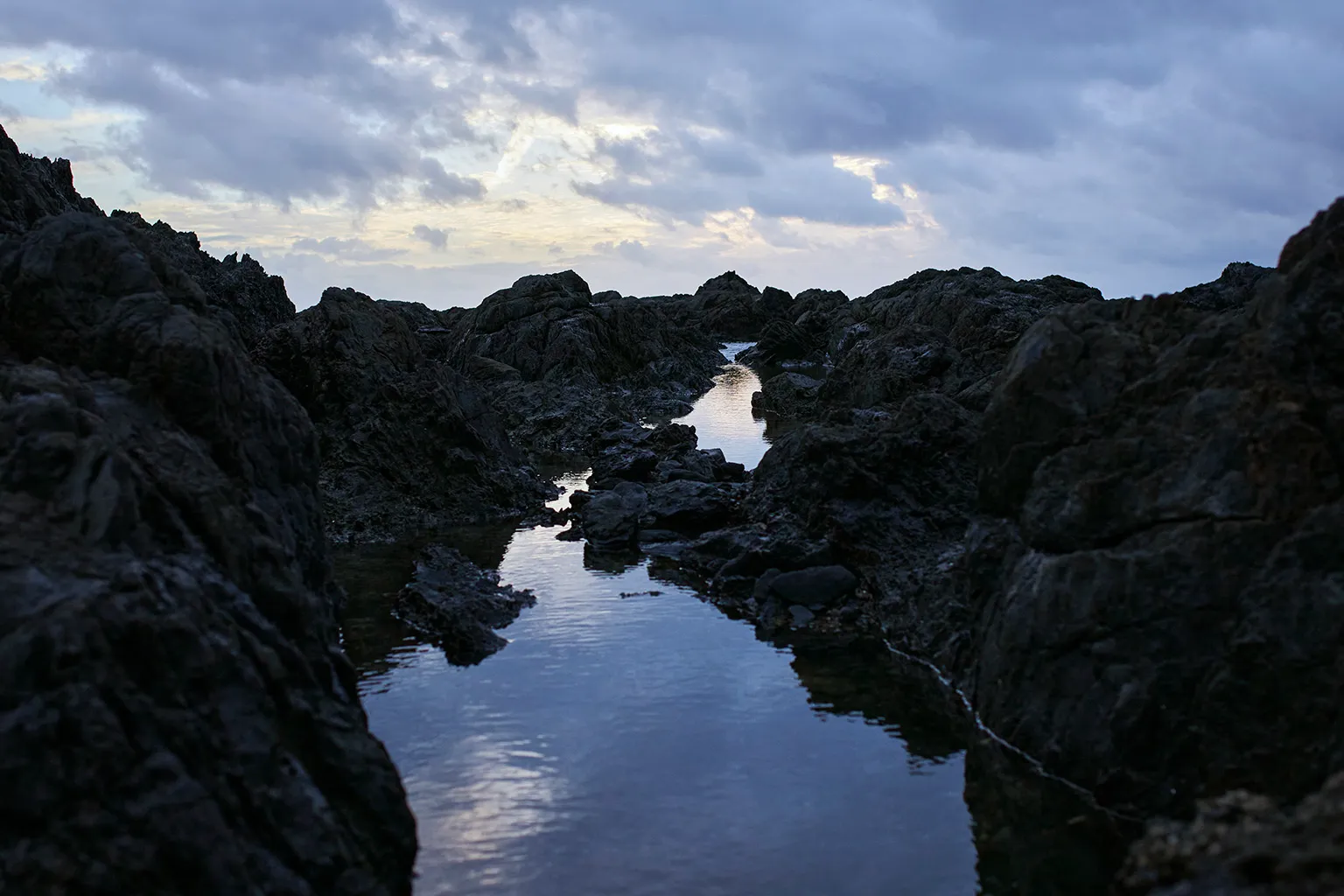
Tsukazaki Tide Pool
Tide pools, which can only be seen at low tide, are home to widely diverse marine ecosystems. Even on days when the sea is tossed with waves by the west wind, the tide pool remains calm. It is a "cradle of the sea" where young fish can grow hidden from predators, along with crustaceans such as crabs and shrimp. The Tsukazaki Tide Pool is distinguished by the coexistence of creatures from both the warm-temperate and subtropical zones. It is a place where you can experience the richness of Yakushima's marine ecosystem.
Information
- Location
- Kurio, Yakushima Town, Kumage District, Kagoshima Prefecture
- Access
- Approx. 50 min by car from Anbo
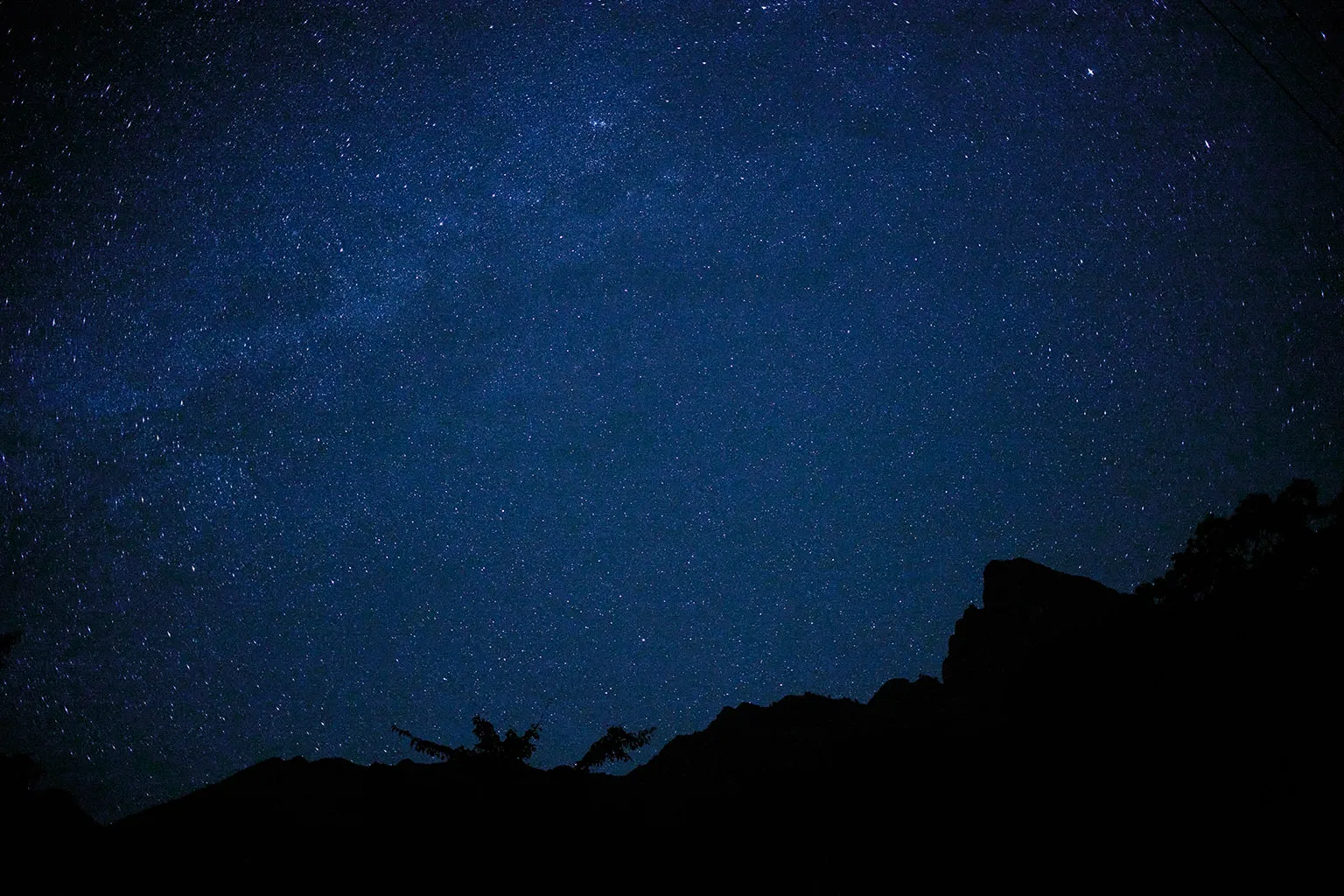
Mt. Mocchomu-dake
Looming above the coastline, Mt. Mocchomu-dake is only 940 meters in height but is popular for its rugged appearance with a bare cliff face, as well as the stunning views of the sea available from the huge rock at the summit. Those not wishing to attempt the climb can also enjoy the view from the base. When the clouds clear from the summit, you can see the Milky Way across the night sky.
Information
- Location
- Onoaida, Yakushima Town, Kumage District, Kagoshima Prefecture
- Access
- Approx. 25 min by car from Anbo (6-7 hours on foot to the summit and back)
Photo = Mina Soma
